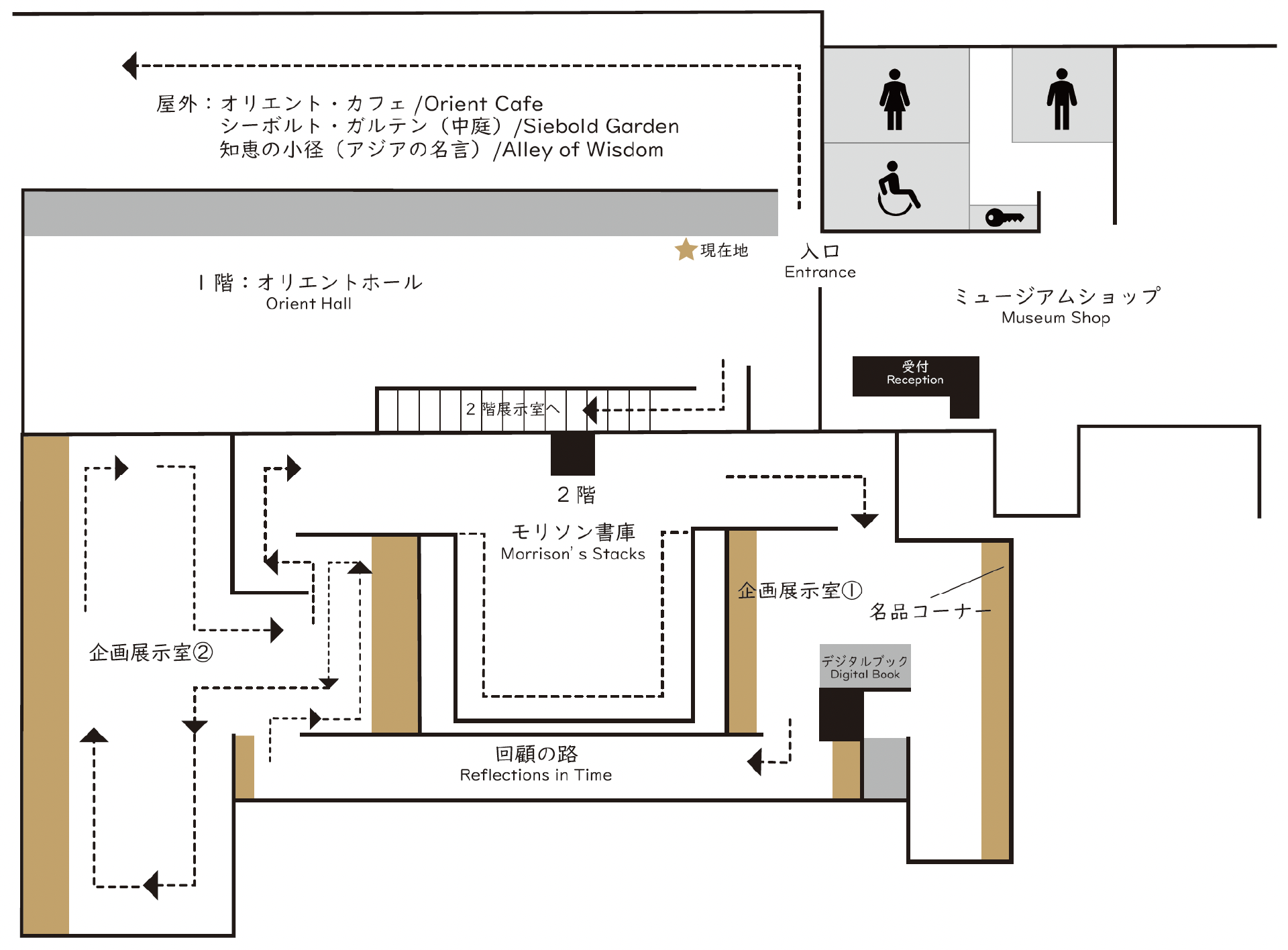-
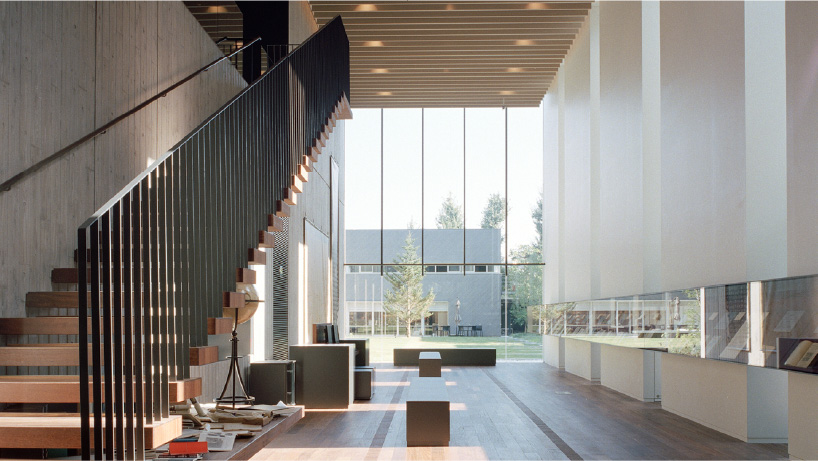
Orient Hall
Your journey through the history of the Orient in the Toyo Bunko Museum departs here. You will become acquainted with the breadth of more than 100 million book holdings and retrace the steps of Toyo Bunko from its foundation to the present day. Precious historical texts written in a myriad of languages are lined up here in the longest display case in Japan; suspended from the ceiling is a giant life-size replica of Toyo Bunko's largest map “Edo Oezu”; and against the wall is the stone rubbing “Gwanggaeto Stele.” There is also an information terminal for the “Digital Silk Road,” which we hope you will enjoy as well.
-
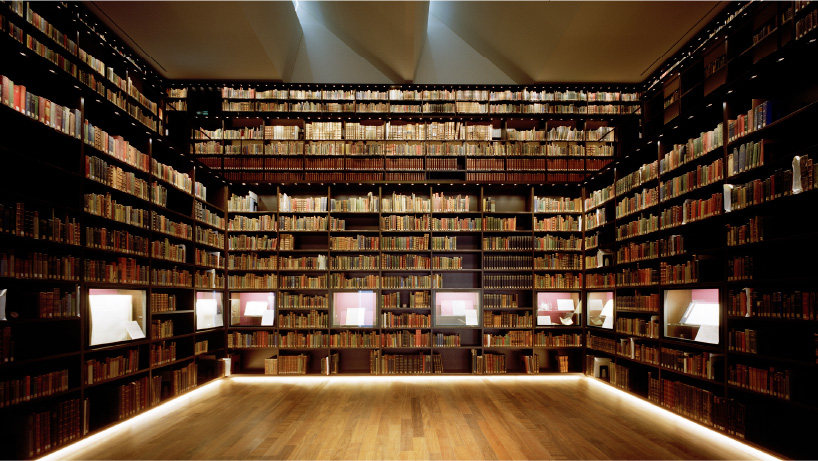
Morrion's Stacks
This is the most famous of Toyo Bunko's collections. In 1917, the founder of Toyo Bunko, Hisaya Iwasaki, purchased approximately 24,000 Asia related books and pieces of art from the Beijing-based Australian doctor GE Morrison. You have access here to this precious collection that passes through a century of time.
※ Please do not directly touch the books (an alarm is active). Also note that staff members have been arranged throughout the exhibits and may enter or leave an area suddenly. -
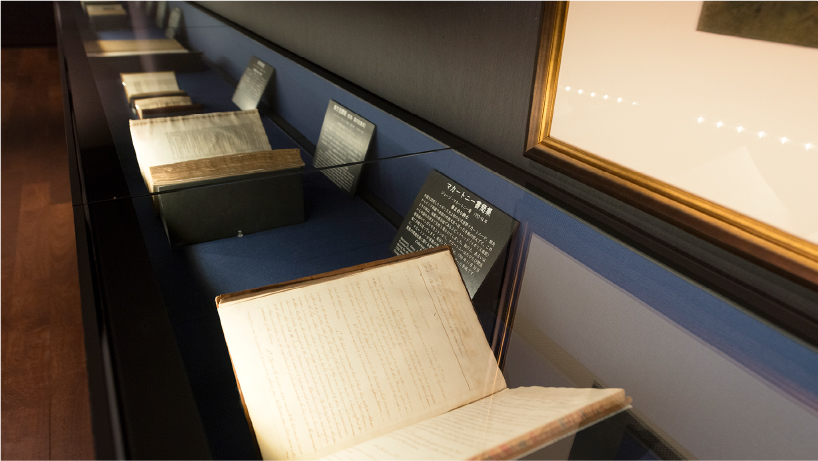
Treasure Room
This is an exhibition room for masterpieces including National Treasures and Important Cultural Properties.
-
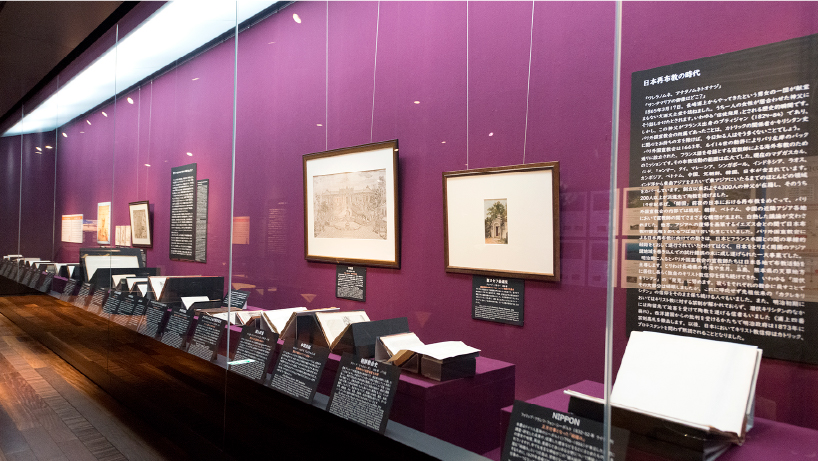
Special Exhibition Room
This is the main room for special exhibitions on Asian history and culture, and East-West exchange.
-
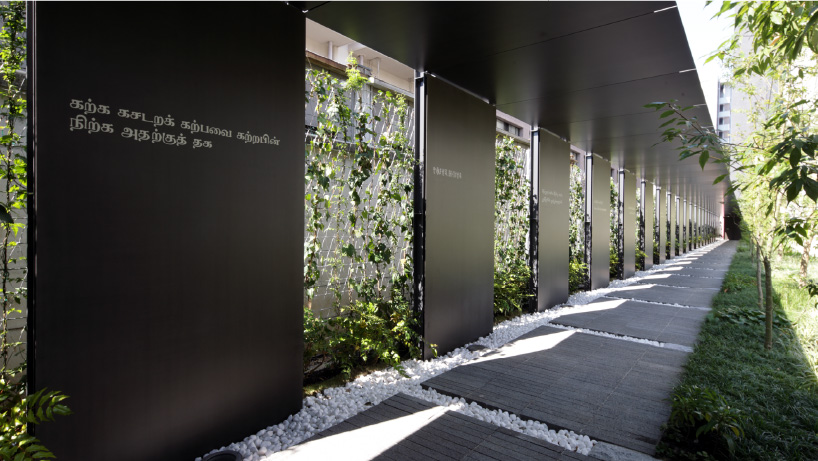
Alley of Wisdom
This is a covered road bridging the museum and its restaurant “Orient Cafe.” The sides of the pathway are lined with Asian language quotations, engraved across panels displaying lettering rarely seen except by the experts we commissioned to translate them.
After giving the mind a good workout on this path, enjoy relaxing a bit in the Oriental Cafe or Courtyard Siebold Garden. -
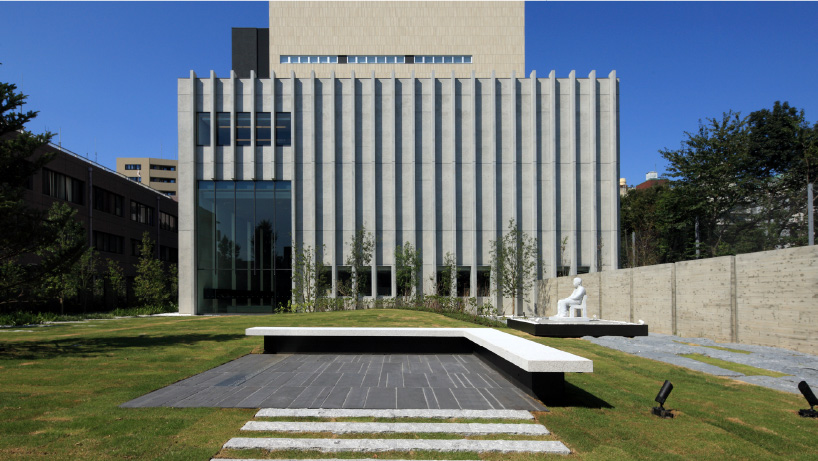
Siebold Garden
This garden connects the main building of the museum to its restaurant. Here we reproduced with real trees and flowers Siebold’s picture book “Flora Japonica”, which is one of the most famous holdings in our collection. Make sure to see the colorful hydrangea (incidentally, the scientific name for the hydrangea is Otakusa, chosen to honor “Otaki,” the name of a wife lost in Nagasaki). This garden is part of the museum to celebrate achievements to the development of Oriental studies by von Siebold in Europe. Also, in the garden we have a sculpture that won the “Toyo Bunko Award” by a student at the Tokyo University of the Arts.
Museum Calendar
Museum
10:00a.m. - 5:00p.m. (Admission ends 30 minutes before closing time.)
Every Tuesday closed
Tel.03-3942-0280

